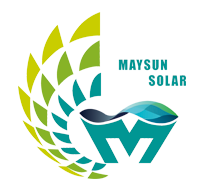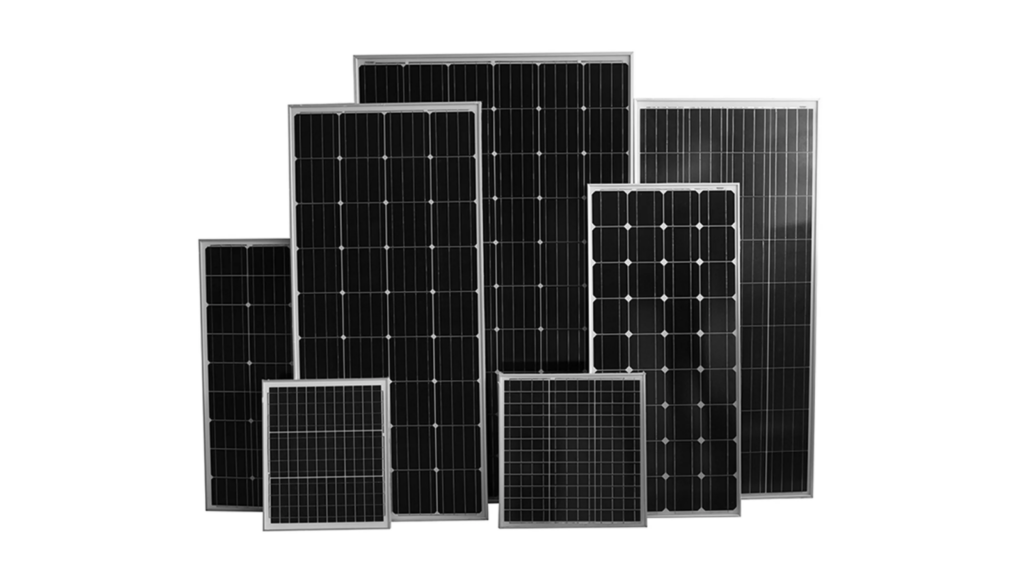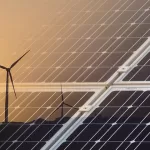When planning to install a photovoltaic (solar) system, one of the first considerations is understanding the space required for the installation and the appropriate dimensions of the solar panels. The size of the system depends on how much energy needs to be generated to meet the energy demands of your household or business. Therefore, the solar panels must be large enough to accommodate a sufficient number of photovoltaic cells to meet the required energy output.
The size of the solar system—and thus the space it occupies—varies depending on the number of panels and cells that need to be installed. But what are the typical dimensions of a single solar panel?
Common Solar Panel Dimensions
Solar panels come in various sizes, but the most commonly used ones are standardized to fit both residential and industrial applications. Here’s a breakdown:
- Small-Size Solar Panels: These are ideal for limited spaces and typically measure around 120 x 60 cm. This size is common for thin-film panels, which are also known for being thinner and lighter. However, their efficiency is usually lower, around 8-10%, when compared to crystalline silicon panels. As a result, larger installation areas might be necessary to generate the same amount of energy.
- Large-Size Solar Panels: On the other end of the spectrum, typical large solar panels measure approximately 200 x 110 cm. These dimensions are used when space is not a significant constraint. Larger panels help optimize the overall system cost by reducing the need for mounting supports and cabling.
Types of Solar Panels and Their Dimensions
Solar panels come in different types, each with specific characteristics that influence their dimensions and efficiency:
- Polycrystalline Panels: These panels tend to be less efficient but are thinner and narrower. The peak power of polycrystalline panels typically ranges between 230 Wp and 290 Wp. Their standard dimensions are about:
- Height: 160-170 cm
- Width: 90-100 cm
- Thickness: 3-4 cm
- Monocrystalline Panels: Offering higher efficiency, these panels are slightly larger, with peak power ranging between 380 Wp and 480 Wp. The typical dimensions for monocrystalline panels are:
- Height: 170-175 cm
- Width: 110-115 cm
- Thickness: 3-4 cm
While polycrystalline panels have been a popular and economical choice for many years, monocrystalline panels are becoming more preferred due to their higher efficiency.

Space Requirements for Different Solar System Capacities
The size of the solar panels is directly linked to the capacity of the photovoltaic system you plan to install. For instance, the amount of energy required by a household will determine the size of the system. Here’s how much space is typically needed for systems of different capacities:
- 3 kW Solar System:
- Using monocrystalline panels: 18-22 m²
- Using polycrystalline panels: 24-33 m²
- Using thin-film panels: 33-39 m²
- 6 kW Solar System:
On average, at least 50 m² of space is required. However, the space requirement varies based on the type of roof:
- For pitched roofs: around 38-45 m²
- For flat roofs: about 55-65 m² to avoid shading.
Factors Affecting the Choice of Solar Panel Dimensions
There are several critical elements to consider when choosing the right solar panel size for your needs:
- Installation Space: One of the first questions installers will ask is, “What type of structure will the system be installed on, and how large is the available space?” Different types of structures—such as flat roofs, sloped roofs, carports, or ground-mounted installations—offer varying amounts of space. Based on the available space, the right size and performance of the solar panels must be selected.
- Energy Consumption: For an average household requiring 3,000 kWh of electricity annually, an installation of approximately 3 kWp (around 8 panels) would be sufficient. However, space constraints, panel efficiency, and installation preferences can all affect the number and size of panels required.
In conclusion, the availability of standardized panel sizes allows consumers to choose the most suitable solar panels based on their specific energy needs, available space, and efficiency requirements. Whether opting for smaller, more efficient panels or larger, cost-effective ones, it’s essential to consider both the performance and the available space to make an informed decision.

Since 2008, Maysun Solar has been dedicated to producing high-quality photovoltaic modules. Our range of solar panels, including IBC, HJT, TOPCon panels, and balcony solar stations, are manufactured using advanced technology and offer excellent performance and guaranteed quality. Maysun Solar has successfully established offices and warehouses in many countries and built long-term partnerships with top installers! For the latest quotes on solar panels or any photovoltaic-related inquiries, please contact us. We are committed to serving you, and our products provide reliable assurance.
Recommend Reading:

Empowering Factories with Solar Energy A Strategic Tool for Controlling Production Electricity Costs
Commercial and industrial solar is becoming a key solution for factories to reduce electricity costs and hedge against price fluctuations. This article systematically analyzes its deployment models, cost advantages, and sustainable value pathways.

How Businesses Can Offset Carbon Taxes with Solar Power
This article analyzes the latest carbon tax policies and photovoltaic deduction strategies, helping European businesses legally reduce taxes, increase profits through solar investment, and achieve a win-win situation for both economy and environment.

Forecast and Response: Seizing the Next Decade’s Growth Dividend in Europe’s Commercial and Industrial Photovoltaics Market
Maysun Solar analyzes the growth trends of commercial and industrial photovoltaics in Europe over the next ten years, from policies and ESG to technological innovation, helping companies seize the initiative in the energy transition.

How to Calculate Solar System ROI and Optimize Long-Term Returns?
Solar power is becoming a key solution for businesses to reduce costs and improve efficiency. Accurately calculating ROI and optimizing long-term returns are essential to maximizing investment value.

Will Agrivoltaics Affect Crop Growth?
Agrivoltaics combines solar energy and agriculture to reduce up to 700 tons of CO₂ per MW, improve water use, and boost crop growth for sustainable farming.

6.5 Billion Loss Hits Photovoltaics: Reshaping or Elimination?
In 2025, the photovoltaic market may see a turnaround as some companies take early action. A €6.5 billion loss is driving businesses to explore new growth areas like energy storage and hydrogen. Which giants will break through? Industry transformation is accelerating!




There are certainly a whole lot of particulars like that to take into consideration. That may be a nice level to carry up. I provide the thoughts above as normal inspiration however clearly there are questions like the one you convey up the place the most important thing will probably be working in sincere good faith. I don?t know if best practices have emerged round things like that, however I’m sure that your job is clearly recognized as a fair game. Each boys and girls feel the impact of only a moment’s pleasure, for the remainder of their lives.
its good as your other content : D, thanks for putting up.
Thank you so much for your kind feedback! We’re thrilled to know that you enjoy our content. If there’s anything specific you’d like to see in the future, feel free to share your suggestions. Your support means a lot to us!